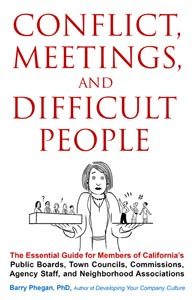This post was published in The Marin Independent Journal, Jan 27th, 2024.
 Global birthrates are dropping. In 50-60 years the world’s population will peak at 10 billion, then fall rapidly. That’s good news and coming soon. Sixty years ago, I was an architect in Toronto, where I designed the Ontario Government Pavilion for EXPO-67 in Montreal. The global population was then 3 billion. The planet was unstressed. Seems like yesterday.
Global birthrates are dropping. In 50-60 years the world’s population will peak at 10 billion, then fall rapidly. That’s good news and coming soon. Sixty years ago, I was an architect in Toronto, where I designed the Ontario Government Pavilion for EXPO-67 in Montreal. The global population was then 3 billion. The planet was unstressed. Seems like yesterday.
 We are only beginning to imagine how the global population decline will transform our international industrial consumer culture, which is currently based on population growth. The declining population adds more uncertainty to the potential benefits of projects intended to ease the effects of climate change.
We are only beginning to imagine how the global population decline will transform our international industrial consumer culture, which is currently based on population growth. The declining population adds more uncertainty to the potential benefits of projects intended to ease the effects of climate change.
Fifty years ago, scientists warned of the dangers of dumping heat-trapping gases into the atmosphere. Now, climate change is delivering an expanding array of unexpected consequences. One is the rising sea level, threatening trillions of dollars of capital investments in low-lying coastal areas.
Here in the US, property owners, public agencies, and other special interest groups such as the construction and real estate industry, call for vast public investment to “protect and defend” against rising seas. But why should we “protect” properties that could eventually be unwanted? It’s smart to understand a situation before you act.
 Less Crowded Future
Less Crowded Future
We can glimpse one possible US future today in Japan, where the birthrate has been below replacement level since 1971. Vacant properties there go begging, the aging population strains the nation’s finances, while fewer young people enter the workforce. The US birthrate has also been below replacement level since 1971, but immigration sustains us. Global population decline will eventually cut our immigration. School enrollment is already way down. Many smaller colleges have closed.
By 2100, ten thousand US towns and cities are projected to be largely emptied. There are many other potential surprises and uncertainties. The COVID-19 pandemic shutdown instantly created office vacancies, people working remotely, and families moving to lower-cost areas. We adapted well, as we usually do.
 Untouchable Climate Change
Untouchable Climate Change
With climate change, we’ve stuck our political heads in the sand. The conjoined twins, consumption and pollution, guarantee we’ll keep kicking the climate can down the road. It’s political suicide to publicly question our consumer culture and capitalism. But starting around 2085, whatever “corrective” actions we take — or don’t — will be framed by the rapidly evolving opportunities presented by the reduced population.
Fewer people means less planet damage, eventually winding back some of the fearful effects of climate change.
Mega projects to redirect or “protect” us from Mother Nature rarely succeed. It’s smarter to work with, not against the environment and global changes. But before acting, we should understand the situation. The last thing we need is anxious, uninformed voters, grasping for straws, exploited by opportunistic politicians, approving hundreds of billions of dollars in projects of unknown final cost, unknown benefits, unknown impacts, and unknown likelihood of success.
For people conditioned to post WW II’s relative calm, change can be uncomfortable. But change is also an opportunity. The list of potential benefits from fewer people is stunning. Less food will be needed, there will be less stress on natural resources, and reduced species and habitat depletion. The Amazon rainforest and ocean fisheries might start recovering. With fewer workers, wages will rise, and workplaces will have to be more attractive. Equality and equity may improve, and the easier life that industrialization promised, may eventually arrive.
 Leadership
Leadership
In the next century, if our population drops to a sustainable level (around 3-4 billion), many of today’s environmental concerns could evaporate. Sure, there will be some uncomfortable adjustments, but these large-scale changes will be the new normal — hopefully accepted, understood, valued, and appreciated as opportunities, not feared or worried about.
The shrinking birthrate is here now. The shrinking population is already working its way up the age pyramid. We can help decentralized public services, such as schools, police, and fire, cooperate and coordinate their response to fewer people.
It’s a golden opportunity for new leadership, building understanding, and easing citizen concerns, countering the media that often benefit from stoking conflict and fear.
Thank you for reading.
Barry
Add Your Name below to my list to know when I have posted a new blog.




